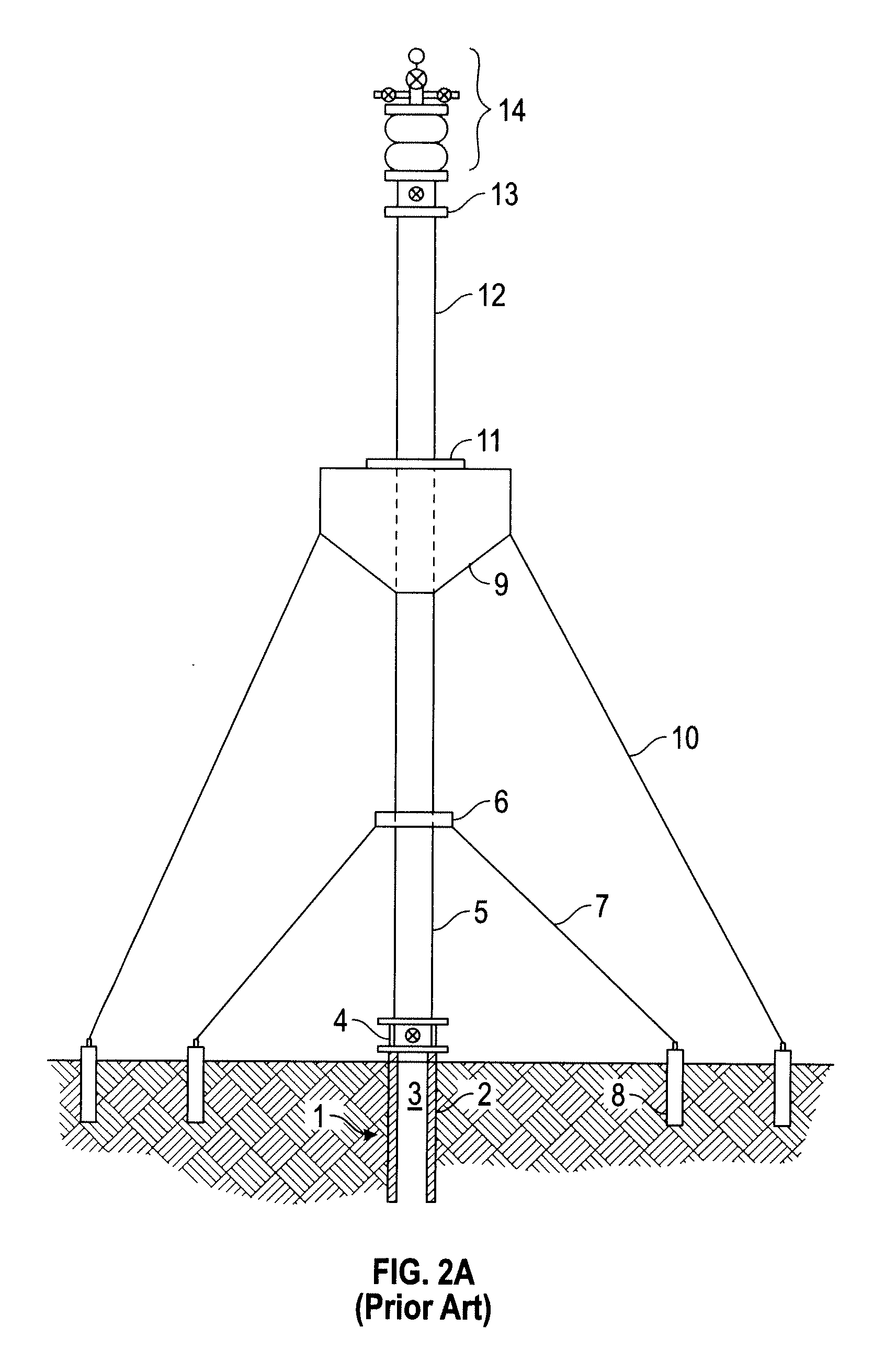Modular Exploration and Production System Including an Extended Well Testing Service Vessel
a production system and module technology, applied in the direction of load accommodation, sealing/packing, borehole/well accessories, etc., can solve the problems of limited land operations involving simple but effective, explorers and producers have little financial incentive to work small reserves, and large-scale drilling operations
- Summary
- Abstract
- Description
- Claims
- Application Information
AI Technical Summary
Benefits of technology
Problems solved by technology
Method used
Image
Examples
Embodiment Construction
[0027]Referring now to the specific, non-limiting embodiment of the invention depicted in FIGS. 1, 2A and 2B, an offshore exploration and production system is provided, comprising a well casing 2 installed in communication with a submerged well 1 and an adjustable buoyancy chamber 9, wherein a lower connecting member 5 is disposed between the well casing and the adjustable buoyancy chamber. In a presently preferred embodiment, the well 1 is accessed from above by means of a well hole 3 that has been bored into an associated sea floor surface. In a typical embodiment, a well casing 2 is set into the hole in a firm and secure manner, and then cemented into place using known downhole technology. In other embodiments, a well casing is securely set into the well hole 3, and a fluid transport member, such as a smaller-diameter pipe or pipe casing, is inserted into well casing 2. Once a desired fit has been achieved, the outer surface of the fluid transport member is cemented or set with a...
PUM
 Login to View More
Login to View More Abstract
Description
Claims
Application Information
 Login to View More
Login to View More - R&D
- Intellectual Property
- Life Sciences
- Materials
- Tech Scout
- Unparalleled Data Quality
- Higher Quality Content
- 60% Fewer Hallucinations
Browse by: Latest US Patents, China's latest patents, Technical Efficacy Thesaurus, Application Domain, Technology Topic, Popular Technical Reports.
© 2025 PatSnap. All rights reserved.Legal|Privacy policy|Modern Slavery Act Transparency Statement|Sitemap|About US| Contact US: help@patsnap.com



